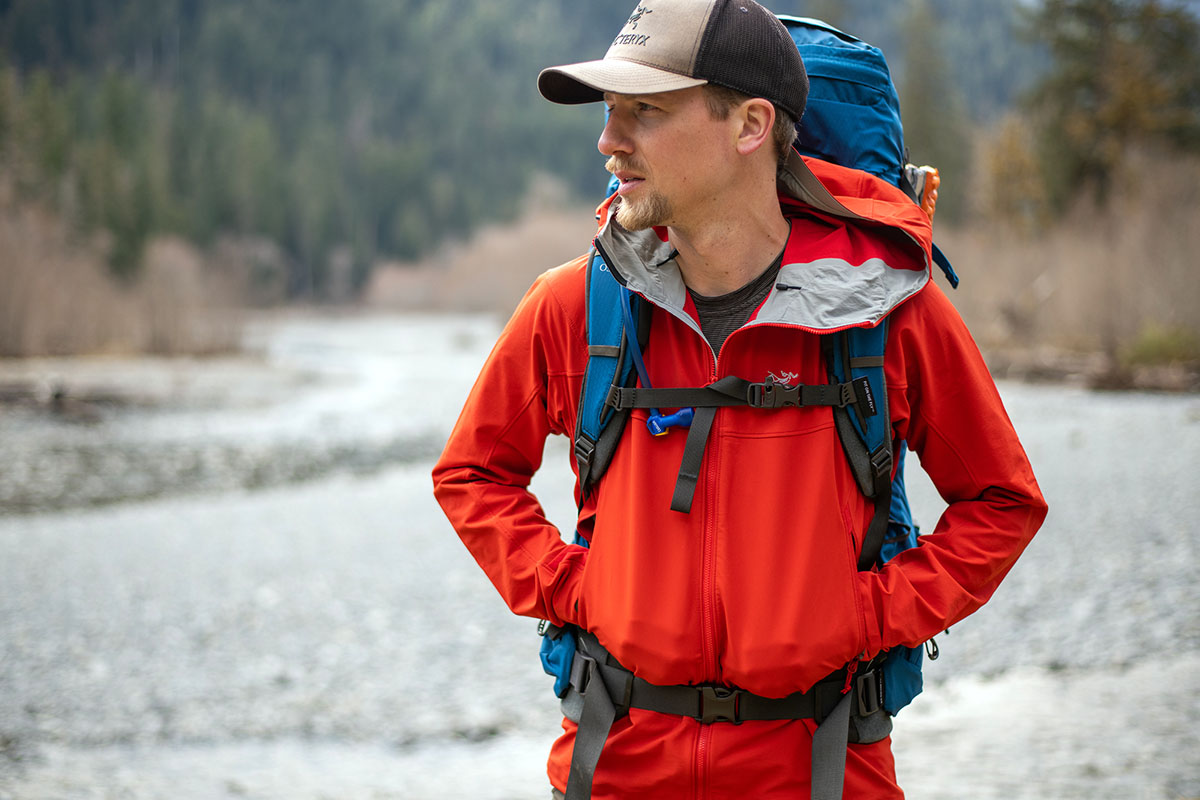
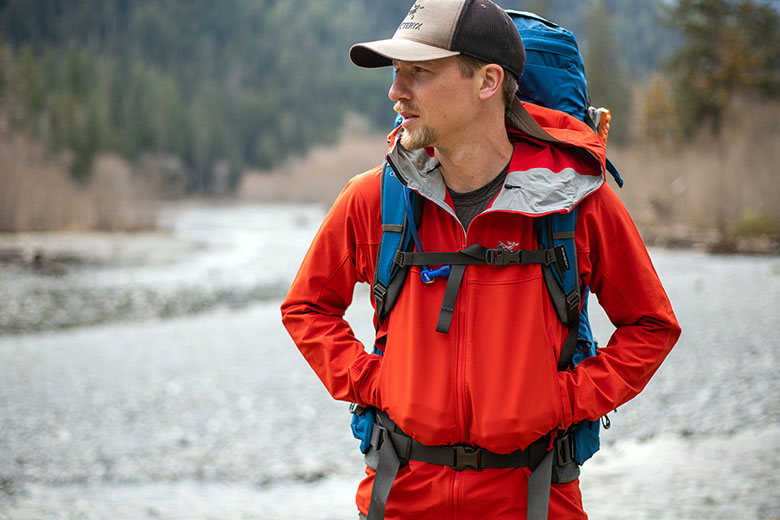
For high-output activities, it’s hard to beat a softshell jacket. Their breathable and stretchy fabrics offer fantastic performance and a really comfortable fit that moves with you. As long as you don’t take them out in a rainstorm, their durable shells can withstand light wind and precipitation—you'll be hard-pressed to find a more versatile shell for a wide range of outdoor activities. After countless seasons of testing all manner of softshell jackets around the world, we feel confident recommending any of the 12 standout models below. Here we break down our favorite softshells of 2025, ranging from casual jackets for daily use to performance pieces for backcountry skiing and ice climbing. For more background, see our softshell jacket comparison table and buying advice below the picks, as well as more information about our testing approach.
Editor's note: We updated this guide on June 4, 2025, to add the Arc'teryx Gamma Lightweight Hoody as our best overall pick and the Dynafit Ridge Dynastretch as our new choice for backcountry skiing. We also updated the Rab Borealis and OR Ferrosi to their most current versions, added new photos from recent testing trips, removed discontinued jackets from Black Diamond and Marmot, and ensured all prices, links, and colorways were current at the time of publishing.
 Category: Performance/casual
Category: Performance/casual
Weight: 12.7 oz. (men’s), 9.2 oz. (women’s)
What we like: Arc’teryx fit, quality, and all-around performance in a durable and lightweight package.
What we don’t: Not very warm; women’s version has a smaller hood, no chest pockets, and an elasticized instead of adjustable hem.
The Arc’teryx Gamma Lightweight Hoody (the lightest in the Gamma line) takes our top softshell spot for putting it all together: solid performance, quality materials, a great fit, and an approachable price, especially for an Arc’teryx product. This isn’t a warm softshell with a thick fleece lining, but the thin construction and excellent features are what give the jacket its versatility. The durable outer fabric is stretchy and water-repellent but also breathes really well, making it a great choice for a day of backcountry skiing or summer alpine climbing. We’ve found the material to be highly durable, and the UPF 40+ protection is ideal for chilly bluebird days. And with clean looks that are completely passable around town, this is a great all-rounder.
As with almost all Arc’teryx products, the fit of the Gamma Lightweight is a bit trim, though the newest men’s version boasts a ‘regular’ fit that’s more accommodating than prior iterations (the women’s is still listed as ‘fitted’). You’ll be able to slide a thinner midlayer underneath, but if you’d like to layer a synthetic or down puffy jacket underneath, consider sizing up. That said, the range of motion is fantastic, and the Gamma’s long sleeves, four zippered pockets (only two on the women’s), and helmet-compatible hood (on the men’s, the women’s is lower-profile) are great for activities like climbing, biking, and skiing. Keep in mind that the wrist openings are on the small side, which can create a bit of a challenge when paired with undercuff gloves. Overall, this is a fantastic jacket, though we wish Arc’teryx didn't strip back the technical features on the women’s version. For a warmer softshell with the same general characteristics, check out the Gamma MX below.
See the Men's Arc'teryx Gamma Lightweight Hoody See the Women's Gamma Lightweight Hoody
 Category: Performance
Category: Performance
Weight: 9.6 oz. (men's), 8.8 oz. (women's)
What we like: A high-quality lightweight softshell at an affordable price.
What we don’t: A bit heavier and bulkier than the BD Alpine Start below.
We’ve been blown away by the performance chops of lightweight softshells like the Black Diamond Alpine Start below, and Rab offers an impeccably priced, quality option in their longstanding Borealis. Clocking in at just 9.6 ounces (8.8 oz. for the women's), the Borealis was designed to protect from the wind in a mobile and breathable package. True to its climbing intentions, it features two harness-compatible hand pockets (one of which doubles as a stuff sack), elasticized cuffs, and a sleek fitted hood that fits easily under a helmet. A simple hem adjustment rounds out this jacket’s minimalist build, and the most current iteration now features a recycled Matrix stretch fabric.
The Rab Borealis is a good bit heavier than BD’s Alpine Start below, which translates to a boost in both durability and weather protection. Whereas the Alpine Start is still at home amongst windbreaker jackets, the Borealis is undeniably a softshell, which makes it a more suitable option for ski touring and rock climbing. On the other hand, we’d be more likely to wear the Alpine Start while winter running or climbing in milder temps, thanks to its stepped-up breathability and streamlined design (it also features an over-the-helmet-compatible hood). But for significantly less cash, the Borealis has a whole lot going for it and is a viable alternative for those looking for a minimalist (but still fully mountain-ready) softshell.
See the Men's Rab Borealis See the Women's Rab Borealis
 Category: Performance
Category: Performance
Weight: 7.3 oz. (men's), 6.4 oz. (women's)
What we like: Lightweight, packable, and versatile softshell.
What we don’t: Thin fabric offers little in the way of insulation.
The Black Diamond Alpine Start is one of the lightest softshells on our list and arguably the most versatile. Whereas burly jackets like the Arc’teryx Gamma MX below can only be worn when temperatures drop, the Alpine Start is a year-round layer. It’s easy to wear over anything from a t-shirt to a lightweight down jacket, depending on conditions. Made with thin stretch-woven nylon coated with a PFC-free durable water repellent (DWR) finish, the Alpine Start is designed to keep out wind and rain without compromising ventilation. And in practice, it delivers: Throughout an all-day drizzle on a trek in Patagonia, the Alpine Start’s shell beaded water and kept us dry while our hiking partners were all forced to don their (less breathable) rain jackets. The jacket is inherently flexible, and the most current model provides a boost in range of motion and unrestricted movement.
The Black Diamond Alpine Start blurs the line between a softshell and windbreaker jacket, a trend we've seen more and more as demand for lighter, more breathable, and more versatile layers has increased. Don’t expect any insulation from the Alpine Start’s thin fabric though, and the stretch knit at the cuffs and hem will also limit how much you layer underneath. But for runners, backcountry skiers, and climbers wanting a light, weather-resistant, breathable softshell that packs down small (into its chest pocket), the Alpine Start is our favorite ultralight offering. It's worth noting that the jacket runs fairly large, so those on the fence may want to size down. If you want more protection, Black Diamond also offers the Alpine Start Insulated Hoody ($289), which boosts warmth with synthetic Polartec Alpha insulation while still keeping the weight low at just 13 ounces (11.2 oz. for the women's version).
Read more: Black Diamond Alpine Start review (women's version)
See the Men's Black Diamond Alpine Start See the Women's Black Diamond Alpine Start
 Category: Performance
Category: Performance
Weight: 14.1 oz. (men's), 12.3 oz. (women's)
What we like:Lightweight, packable breathability that retains good wind resistance.
What we don’t:Cuffs could fit better; not the most affordable option.
Some softshells are designed with specific use cases in mind, and perform exceptionally in those environments—and the Dynafit Ridge Dynastretch Jacket is exactly that. Engineered for high-output ski tours, the Nylon Flexlite material keeps in all the warmth you want while still allowing moisture to escape. Acting as a crossover between a wind shirt and a softshell, the Ridge excels at being a companion for high-intensity winter activities, with the PFAS-free DWR water-repellent coating keeping you dry even during drizzly weather. The generously-sized torso pockets offer excellent storage if you're taking laps and need to stow your climbing skins or other equipment during transitions. And speaking of storage, the Ridge is also highly packable, taking a fourth of the space in our packs than some of the other softshells we've tested on ski tours. Dynafit is known as a skimo brand, emphasizing packability, function, and weight, and the Ridge series hits the nail on the head here.
While the Ridge Dynastretch jacket wins our pick as the best for backcountry skiing, we’d be remiss not to emphasize that it’s good for just that and not much more. If you’re looking to wear a softshell around town, or stay warm on more casually-paced walks or hikes, this jacket is not for you. It excels for high cardio-output activities—what it was designed for—but it’s not really meant for less technical settings. In terms of fit, we didn’t love how the sleeve cuffs were tapered but not adjustable, making it hard to get the right fit around differently shaped gloves. However, the stretchy material allows this jacket fit over many types of layers underneath, and it was flattering with all of them. Looking for an uphill companion for the skintrack? You’ve found it.
See the Men's Dynafit Ridge Dynastretch See the Women's Dynafit Ridge Dynastretch
 Category: Casual
Category: Casual
Weight: 1 lb. 8.7 oz. (men's), 1 lb. 6.3 oz. (women's)
What we like: A good-looking softshell with everyday appeal.
What we don’t: Not a great choice for anything overly active.
Softshells offer great water resistance and breathability for fall and winter outdoor activities, but their hardwearing nature holds up well to everyday use too. The North Face’s Apex Bionic is a nice casual alternative to many of the more technical jackets in our lineup, with a clean appearance that includes three external pockets (2 handwarmer and 1 chest) and a collar in lieu of a hood (though there's also a stylish hooded version for $190). And given that the Apex Bionic is offered in some classy colorways, it will almost certainly pair well with your favorite jeans or flannel. For everything from walking the dog in chilly or wet weather to light adventuring in the cold, this is a good-looking softshell option.
Keep in mind that The North Face Apex Bionic was designed for casual wear first and performance use second, and it’s far from our first choice for high-output activities. This classic jacket was given a cleaner, more streamlined design the last time it was updated, but it’s still boxier than most performance-oriented softshells, and the bulky fabric won’t pack away or stretch as well as the lightweight offerings on this list that are geared toward mobility. That said, the relaxed fit works well for layering, and the jacket does deliver in terms of wind and water protection. For everything from wet-weather commuting to short hikes, the Bionic remains one of our favorite casual softshells year after year.
See the Men's The North Face Apex Bionic See the Women's The North Face Apex Bionic
 Category: Performance/casual
Category: Performance/casual
Weight: 1 lb. 4.6 oz. (men's), 1 lb. 2.0 oz. (women's)
What we like: Tougher and warmer than the Gamma Lightweight.
What we don’t: Quite a bit more expensive; women's version only has one chest pocket.
The Arc’teryx Gamma MX has been on the market for years, with plenty of summits and deep backcountry days to its name. It performs and is priced like a serious adventure softshell: You get bomber outer fabric, plenty of storage, and that glorious Arc’teryx fit that guides and the hardcore crowd love. But unlike many performance pieces, the clean styling of the MX (which stands for "mixed weather") means you can more easily get away with wearing it off the mountain. And with a recent update, this time-tested classic got a little bit better, with a PFAS-free DWR treatment and a roomier "regular" fit (as opposed to a slim athletic fit) to help make layering underneath easier.
In comparing the Gamma MX to the Gamma Lightweight above, the MX is quite a bit warmer with an added fleece lining. This can be a good thing or a bad thing, depending on your use, but the lining is quite comfortable and ideal for cold days. We like the versatility that comes with the non-insulated Gamma Lightweight, but the more significant reason for the difference in ranking is price. There just aren't enough extras on the MX to justify the extra cash in our eyes. That’s not to take away from the Gamma MX—it's been around for years for a reason, and its popularity is reaching legendary status in the alpine community.
Read more: Arc'teryx Gamma MX review (women's version)
See the Men's Arc'teryx Gamma MX See the Women's Arc'teryx Gamma MX
 Category: Casual/performance
Category: Casual/performance
Weight: 14.2 oz. (men's TechFace), 10.5 oz. (women's CrossStrata)
What we like: The comfort and breathability of fleece with a protective softshell exterior.
What we don’t: You get more versatility by layering a baselayer with a dedicated lightweight softshell or windbreaker.
Patagonia’s R1 TechFace Hoody and the women's R1 CrossStrata are a unique and modern take on the standard softshell jacket. You get a stretchy woven face fabric (the common denominator among softshells) with the addition of a soft fleece backer (in the form of Patagonia’s ever-popular R1). The result is the comfort and breathability of a fleece with the durability and weather protection of a softshell—all wrapped up in a reasonably light package. And as we’ve come to expect from Patagonia, the R1 TechFace and CrossStrata are good-looking, too, proving their chops as highly versatile pieces that you can wear both on the trail and around town.
In many ways, these R1's are an all-in-one answer to a popular layering choice for backcountry skiing, hiking, and cold-weather climbing: a thick baselayer and light shell. Oftentimes, we prefer the versatility of two layers instead of one, but there’s no denying the convenience here. That said, compared to the more traditional softshells, the TechFace and CrossStrata offer slightly less protection (with a thinner shell) and slightly more warmth (with a thicker liner), which isn’t a winning combination for high-output activities in the winter. But as long as you keep these differences in mind, this is a great piece to reach for in the right conditions. And while Patagonia no longer makes the R1 TechFace in a women's version, the R1 CrossStrata is a very similar layer—it has an additional drop-in pocket with a snap closure, an under-the-helmet hood instead of over, and a non-adjustable hem, and is cheaper at $189.
Read more: Patagonia R1 TechFace review
See the Men's Patagonia R1 TechFace Hoody See the Women's Patagonia R1 CrossStrata Hoody
 Category: Performance
Category: Performance
Weight: 13.9 oz. (men's), 12.6 oz. (women's)
What we like: Thin, light, breathable, and a solid price.
What we don’t: Lightweight build means less warmth and weather resistance.
The Outdoor Research Ferrosi is a far cry from the bulky, boxy design that epitomizes softshell jackets of old. At $149 and only 13.9 ounces (12.6 oz. for the women's), it’s an affordably priced, thin, and lightweight shell that won’t weigh you down and excels at nearly every high-output outdoor activity: hiking, biking, climbing, skiing, you name it. Plus, the Ferrosi is impressively tough and abrasion-resistant, will block out a good amount of the elements, and has excellent stretch and breathability. All in all, it’s a decidedly versatile piece: You can wear this jacket over a T-shirt in mild weather or over a puffy in the winter. And the cherry on top: the Ferrosi packs down small for a softshell, stuffing into its own hand pocket.
Very few cons come with this jacket, but we did experience some downsides. The latest model eschews drawstrings at the front of the hood, which is a helpful feature in our eyes. The hand pockets are also not set high enough to be compatible with a harness or hipbelt, but that does make them more convenient for day-to-day use. And if you're wanting your softshell to provide some warmth from a fleece lining, the Ferrosi will leave you chilly. These nitpicks aside, this now-classic jacket is an undeniably superb value, extremely versatile for a range of activities, and a great crossover pick for both casual and performance use. Members of our team have worn every iteration of the Ferrosi over the years and it's been a hard-wearing and extremely useful layer to own.
See the Men's Outdoor Research Ferrosi See the Women's Outdoor Research Ferrosi
 Category: Performance
Category: Performance
Weight: 11.8 oz. (men's), 10.2 oz. (women's)
What we like: A minimalist yet waterproof softshell.
What we don’t: Trim fitting; waterproof membrane impacts breathability.
U.K.-based Rab specializes in technical outerwear for alpine endeavors, and their Kinetic 2.0 is a high-performance softshell built for backcountry skiing, climbing, and other high-output activities in cold and wet weather. This jacket inches closer to a hardshell than your standard softshell, combining a waterproof membrane with a stretchy knit face fabric. The end result is the softness and mobility of a softshell, along with the protection of a hardshell, which is a winning combination for working hard in winter conditions. Rab rounds out the streamlined and lightweight design with an under-the-helmet hood, two harness or hipbelt-compatible handwarmer pockets, velcro cuff adjustments, and a single-end hem cinch.
Manufacturers have been toying with the hybrid hardshell/softshell concept for a while (the now-discontinued Patagonia Galvanized was one of our favorites), but the Kinetic 2.0 got our attention due to its impressively lightweight build. For 9 ounces less than the Gamma MX above, the Rab will keep you drier when the skies unleash. You do give up some breathability with the waterproof membrane, and the Kinetic’s decidedly trim fit doesn’t allow much room for layering, but overall this is an excellent layer to consider if you like to get out in drippy weather.
See the Men's Rab Kinetic 2.0 See the Women's Rab Kinetic 2.0
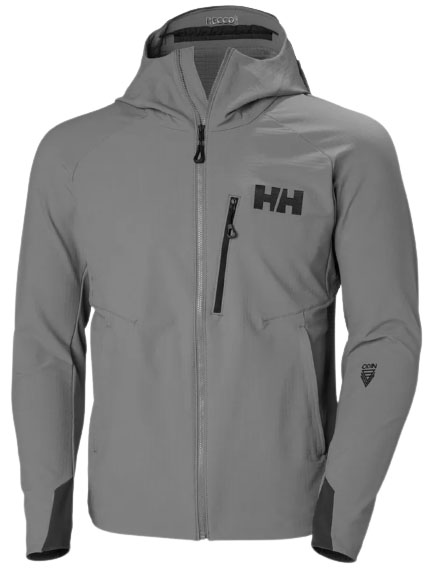 Category: Performance
Category: Performance
Weight: 1 lb. 5.2 oz. (men's). 1 lb. 2.7 oz. (women's)
What we like: A cozy softshell hybrid with functional ski-specific features.
What we don’t: Too warm for most days; on the heavier side.
Norway-based Helly Hansen has been quietly churning out premium mountain clothing for over a century, and their innovative Odin Pro Shield is a case in point that they’re still evolving. Similar to the R1 TechFace above, the Odin Pro Shield (part of the brand’s ski touring-specific Odin collection) combines a softshell exterior with a fleece liner, balancing the durability and protection of the former with the warmth and comfort of the latter. For active days in variable winter conditions, it’s a thoughtfully made and purpose-built option from a trusted mountain brand.
However, at 1 pound 5.2 ounces (1 lb. 2.7 oz. for the women's version), the Odin is notably heavier than the R2 version of Patagonia’s TechFace above (1 lb. 2.3 oz.), which translates to a considerable increase in warmth and coverage, along with added bulk. It also tacks on an over-the-helmet hood (compared to the Patagonia’s under-the-helmet design), a drawcord adjustment at the hem (the TechFace has a simple elastic binding), and a built-in RECCO reflector. The women's model features a zipper that lies below the chest, while the men's has a zippered chest pocket. Overall, the Odin is a much closer hardshell alternative but not our favorite choice for mild conditions or those pushing particularly hard up the skin track. But for sub-freezing aerobic activity or slow uphill travel, it’s a fully serviceable choice. Note: stock is low at the time of publishing, but should rebound soon in the coming months.
See the Men's HH Odin Pro Shield Hybrid See the Women's HH Odin Pro Shield Hybrid
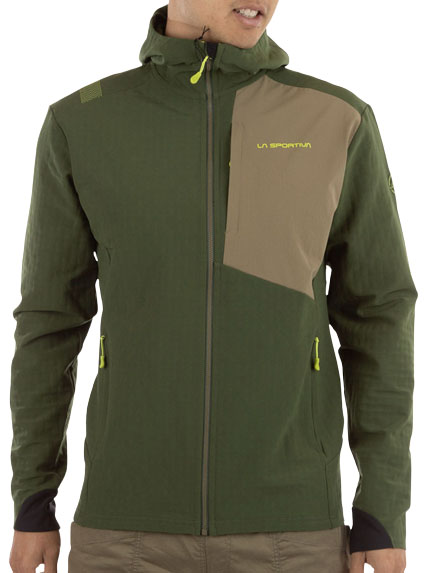 Category: Performance
Category: Performance
Weight: 15.6 oz. (men's), 13.5 oz. (women's)
What we like: A solid R1 TechFace competitor for $60 less.
What we don’t: Trim European fit; women's version has one less pocket.
La Sportiva is a big name in footwear, but the Italian company also has a range of technical apparel for mountain-based activities like climbing and skiing. Their Descender Storm is a high-performance softshell hoody that prioritizes both performance and sustainable design. Like many modern hybrids (including the R1 TechFace/CrossStrata and Odin Pro Shield above), it features windproof softshell fabric on the exterior and a soft fleece interior. We especially love this combination for high-output activities when you might just be layering a t-shirt underneath—the brushed lining feels great next to the skin, deftly wicks away moisture, and traps heat when you’re at rest.
The Descender Storm also incorporates a few sustainability measures that we appreciate: Not only is it built with 100% recycled materials and a PFC-free DWR, but it’s also designed to reduce micro-shedding of plastics into wastewater (one of our main complaints about fleece). We love the jacket’s clean styling, sleek hood, and articulated, performance-oriented fit, and the elastic patches at the cuffs lend a very secure and high-end feel. The women's model is largely similar, but leaves out a zippered chest pocket. All told, this is a solid alternative to the R1 TechFace above for $60 less. As with many things Euro, the Descender Storm is fairly trim-fitting, so you might want to consider sizing up for more mobility or if you plan to wear bulky layers underneath.
See the Men's La Sportiva Descender Storm See the Women's La Sportiva Descender Storm
 Category: Casual
Category: Casual
Weight: 1 lb. 7 oz. (men's Ascender), 1 lb. 3.1 oz. (women's Kruser)
What we like: Works great for daily wear.
What we don’t: Generic fit; not a performance piece; no chest pocket on women's version.
Like the Apex Bionic above, the Columbia Ascender (and women's Kruser Ridge III) is geared toward everyday use and not necessarily for summiting mountains. If you want a softshell for daily wear from fall through spring or quick jaunts in the snow, the Ascender and Kruser are just about ideal. They are priced right and match up well with the Apex Bionic in durability and warmth, with a sturdy shell and fleece-lined interior.
What are you giving up at this budget-friendly price? The fit on these Columbia pieces is pretty generic, but you can squeeze a midlayer underneath or wear it over a dress shirt or blouse to and from the office. Don’t expect it to keep up if you’re working hard, but you probably already knew that by checking the price. On the topic of price, we often see the Ascender and Kruser at a significant discount (sometimes half off or more), which makes it an even better value.
See the Men's Columbia Ascender See the Women's Columbia Kruser Ridge III
| Jacket | Price | Weight (men's) | Category | Helmet-Compatible Hood | Pockets |
|---|---|---|---|---|---|
| Arc’teryx Gamma Lightweight Hoody | $260 | 12.7 oz. | Performance/casual | Yes (climbing & ski) | 4 |
| Rab Borealis Jacket | $120 | 9.6 oz. | Performance | Under-the-helmet | 2 |
| Black Diamond Alpine Start Hoody | $199 | 7.3 oz. | Performance | Yes (climbing) | 1 |
| Dynafit Ridge Dynastretch | $250 | 14.1 oz | Performance | Yes (climbing & ski) | 2 |
| The North Face Apex Bionic 3 | $160 | 1 lb. 8.7 oz. | Casual | No | 3 |
| Arc’teryx Gamma MX Hoody | $400 | 1 lb. 4.6 oz. | Performance/casual | Yes (climbing & ski) | 5 |
| Patagonia R1 TechFace Hoody | $219 | 14.2 oz. | Performance/casual | Under-the-helmet | 2 |
| Outdoor Research Ferrosi Hoodie | $149 | 13.9 oz. | Performance | Yes (climbing) | 3 |
| Rab Kinetic 2.0 | $240 | 11.8 oz. | Performance | Under-the-helmet | 2 |
| Helly Hansen Odin Pro Shield Hybrid | $220 | 1 lb. 5.2 oz. | Performance | Yes (climbing & ski) | 3 |
| La Sportiva Descender Storm | $159 | 15.6 oz. | Performance | Yes (climbing) | 3 |
| Columbia Ascender Jacket | $90 | 1 lb. 7 oz. | Casual | No | 3 |
The utility of softshells is often lost in the shadows of hardshells, insulated jackets, and good ol' rain jackets, but the more time we spend with these versatile layers, the more we grow to love them. From granite crack to skin track—and everything in between—a softshell is something of a "missing link" layer for the dedicated adventurer. The Switchback Travel team can regularly be seen testing these unique jackets while dangling off of tiny crimps hundreds of feet in the air, ripping down a snow-strewn peak, or simply bopping around town on a rest day. This guide was originally put together back in 2016 with 12 picks; for 2025, we also have 12 worthy jackets featured, all with something unique to offer for the whole spectrum of outdoor activities. Editor-in-chief Penney Garrett currently leads the charge on this lineup, along with input from the entire Switchback staff and community. The team researches and tests softshell jackets as they explore mountaintops from Patagonia to Lake Tahoe to Vancouver Island.
Softshell jackets vary widely and are designed for a broad range of purposes and activities. We try to put each jacket through the wringer in the conditions and environments they are designed for and keep an eye out for key metrics when determining their worth. Wind and water resistance, breathability, weight, fit, mobility, and comfort are all important considerations. Finally, we know the softshell jacket market is competitive and constantly evolving—there are more hybrid and crossover pieces in this realm than almost any other. As a result, we keep our finger on the pulse of new products when they surface, adding standouts to our list along the way and ensuring our existing reviews stay up-to-date.

As the name suggests, a softshell is a flexible outer layer that serves as an alternative to a traditional hardshell jacket. A fairly wide range of products fall under this jacket type, but all softshells are made with a woven nylon or polyester that gives them their signature stretchy feel. The face fabric is smooth and quite durable, while the interior is usually some form of brushed polyester or fleece grid that provides varying levels of warmth. Softshell jackets are not designed to be impervious to the elements; instead, they’re meant to balance water and wind resistance with performance characteristics like breathability and mobility. We’ve found them to be the ideal choice in cool weather and when you’re working hard. For an even deeper dive into this topic, we’ve written a dedicated article answering the question: What is a Softshell Jacket?
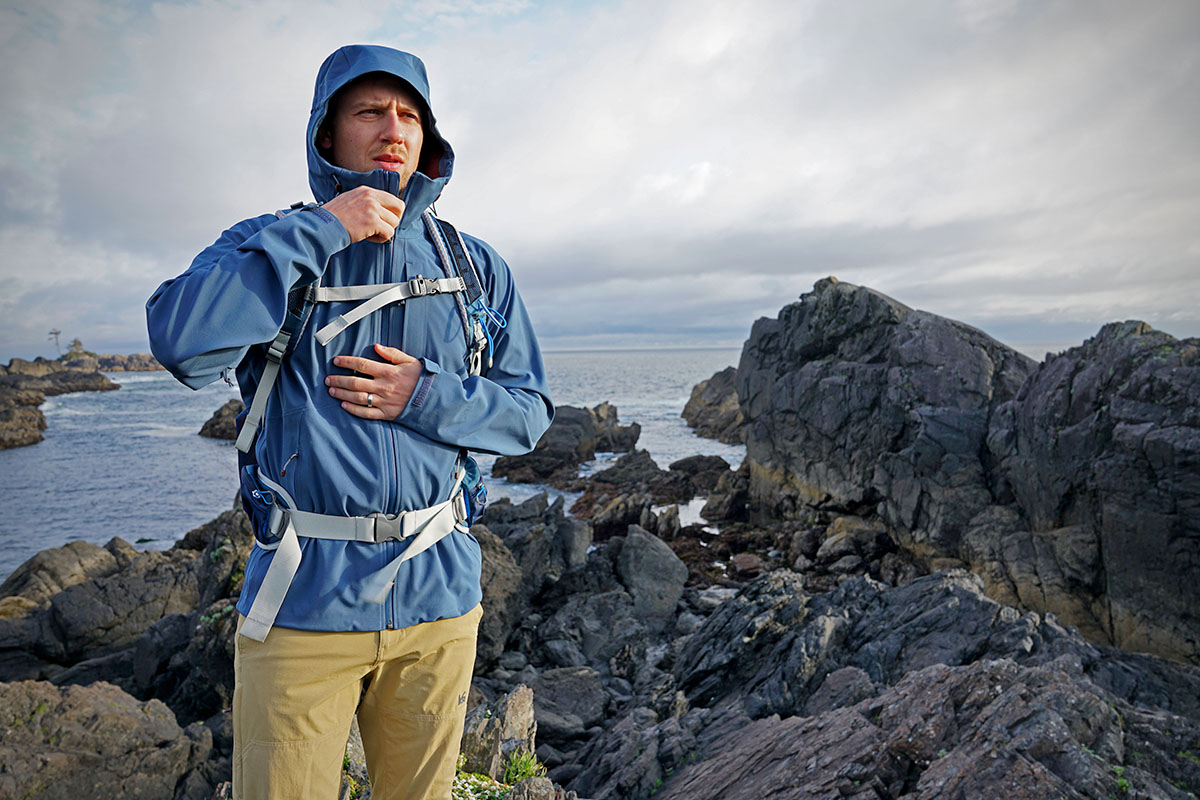
Much like rain jackets, the softshell market is large (and growing), but it can be broken into two general categories: casual and performance. Casual softshells have a generous fit and a basic feature set for use as an outer layer from fall through spring. They excel as a daily piece because their stretchy fabrics are far more comfortable and breathe better than a rain jacket. Even through a Seattle winter, we’ll still reach for our softshell jacket so long as there isn’t heavy precipitation in the forecast. Our favorite casual softshell is The North Face Apex Bionic 3. With a slick appearance and simple feature set, it looks great around town but has just enough performance chops for light adventuring should the mountains call and is a stellar value.

Performance softshells are intended for activities like climbing, mountaineering, and ski touring and leverage the two primary benefits of a softshell: breathability and mobility. Furthermore, these jackets have outdoor-specific features like helmet-compatible hoods, pockets that are set high to accommodate a hipbelt or harness, and a tailored fit. Relative to other performance outerwear, cost doesn’t increase substantially between the casual and performance options, in part because the technology is largely the same across the board. Two notable exceptions are the Arc’teryx Gamma MX and Rab Kinetic 2.0, which offer beefed up weather protection for serious outdoor pursuits.
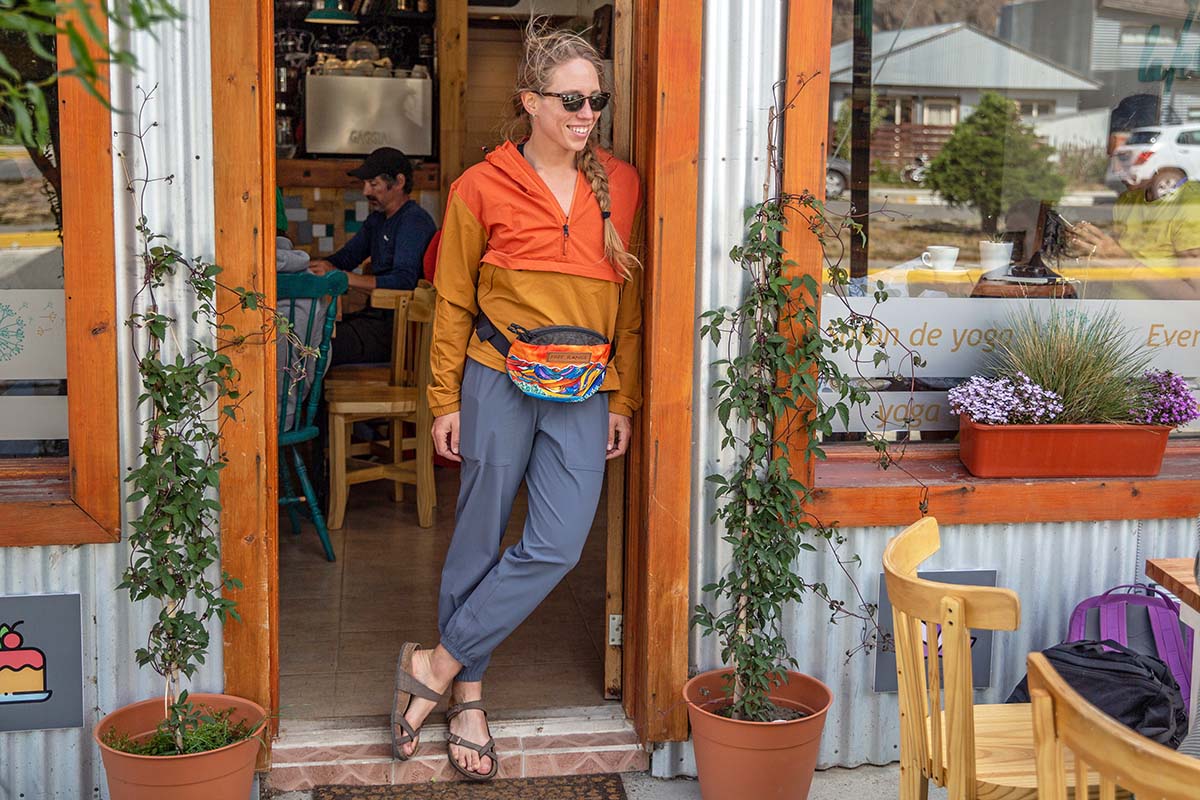
One of the reasons that people hesitate to buy a softshell is that it lacks the security you get from a rain jacket or hardshell in terms of waterproofing. But with a durable water repellent coating (DWR) to bead up and shed water and a tough outer fabric, most softshells can handle light rain showers or wind gusts just fine. Sustained moisture will make its way through most jackets, however, because they lack seam taping and a waterproof membrane. In the end, we don’t recommend a softshell for prolonged exposure to precipitation—hardshell jackets still are the best in that type of weather. At lower elevations, if you need an emergency waterproof jacket, a light and packable rain shell serves as an excellent backup.
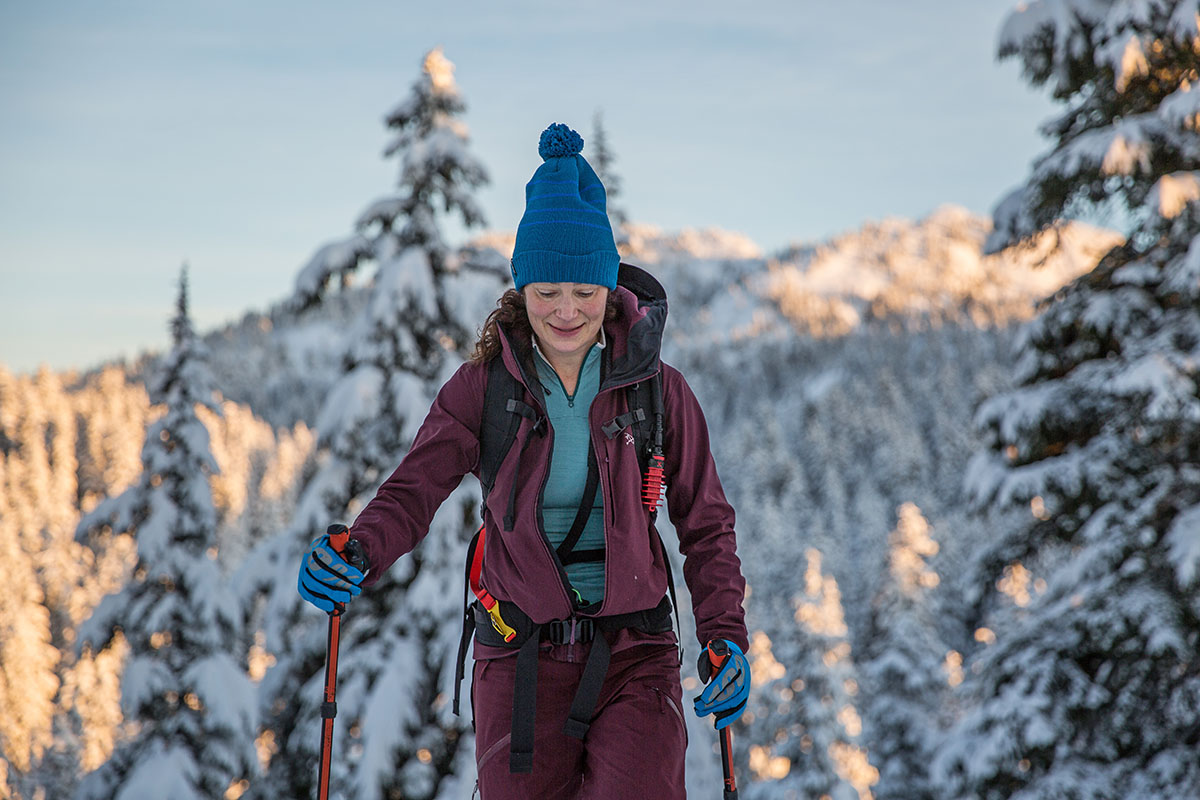
Recently, we’ve seen an increase in hybrid hardshell/softshell designs, with jackets like the Rab Kinetic 2.0 leading the charge. With a 3-layer waterproof construction, seam taping, and water-tight front zip, the Kinetic fits the definition of a hardshell, but a stretchy face fabric adds the mobility and breathability of a softshell. However, as we’ve come to expect with do-all jackets, the Rab makes compromises in both departments—with a streamlined build, it's overall less protective than most hardshells, and the thin fabric doesn't offer the same level of windproofing or insulation as most of the softshell competition. On the other hand, the Kinetic 2.0 is a great jacket for those looking for something in between.
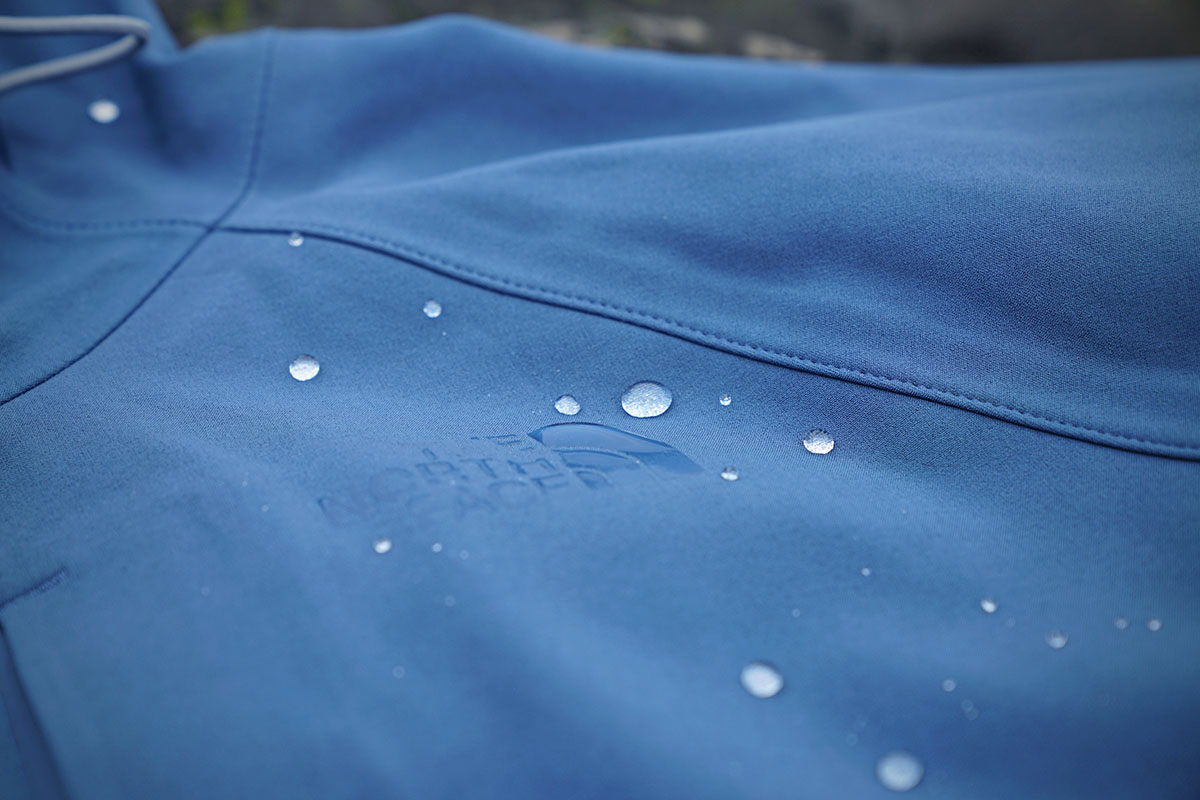
Along with stretchiness, the breathability of a softshell is one of the main reasons to purchase one. They far outperform waterproof hardshells in high-exertion activities like climbing or backcountry skiing. How well a softshell breathes does vary and is usually associated with a few common features. The most breathable softshells are thinner designs without a tightly woven and super tough (and less air-permeable) outer layer. For maximum breathability, air permeability is your friend as it moves more air in and out of the shell. On the other hand, too much airflow compromises weather resistance and warmth. It’s always a balance, but most softshells offer very good breathability for an outer layer, with standouts including the Arc’teryx Gamma Lightweight Hoody, Rab Borealis, and Black Diamond Alpine Start.
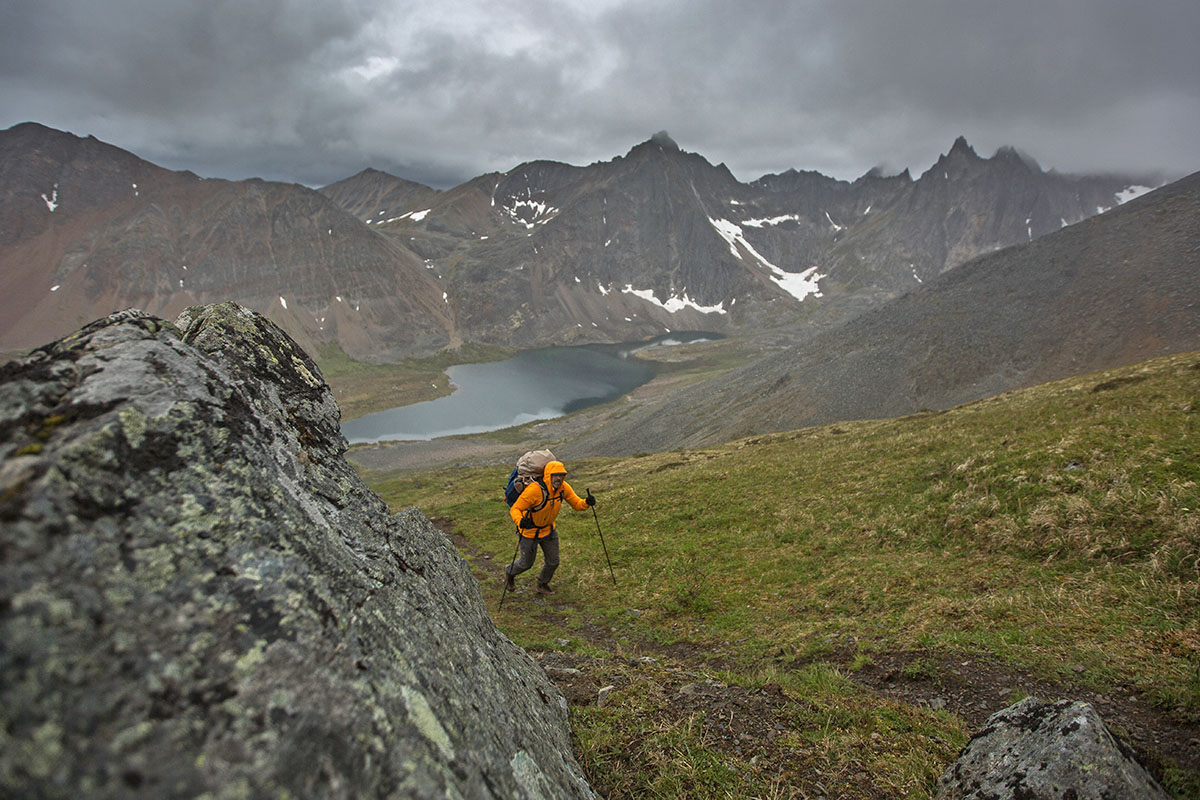
Softshells can vary dramatically in thickness and warmth, from thin shells offering no insulation to thick, fleece-lined jackets. For use in the dead of winter, activities like ice climbing, or even over a puffy around town, thick softshells like the Arc'teryx Gamma MX are great options. We often, however, prefer the versatility of a lighter-weight jacket, which can always be worn over insulating layers and offers better breathability and the option to be worn in milder temperatures. Jackets like the Arc’teryx Gamma Lightweight Hoody are just as ready for a backcountry ski trip as they are for a spring hike.
It’s also important to note that uninsulated softshell jackets will not be warm enough on their own in subfreezing temperatures. Even if you’re working hard, you’ll need a good system of base and midlayers to stay comfortable. For recommendations on other insulated pieces, check out our articles on the best down jackets, synthetic jackets, and fleece jackets.
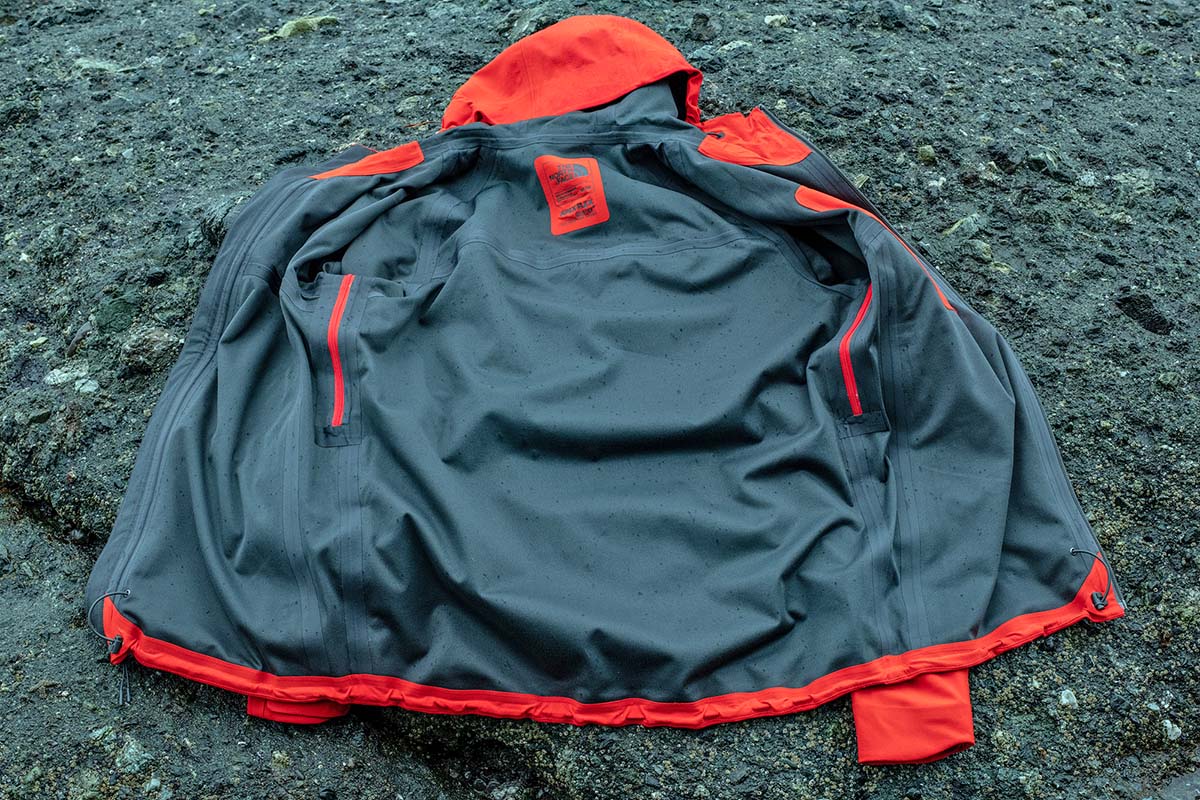
In general, softshell jackets are one of the heavier and least packable outer layer options, losing out to both hardshells and rain jackets in this regard. The weave of the stretchy fabric and fleece linings adds both bulk and weight, so it follows that the worst offenders are the warmest and most feature-rich softshells.
All that said, with minimalist gear growing in popularity, the softshell category is swiftly following suit. There are now are a number of lighter options that dip under 1 pound, including the Outdoor Research Ferrosi and 9.6-ounce Rab Borealis. Beyond that, we’ve begun to see a whole new style developing, merging the uberlight intentions of a windbreaker jacket with a softshell’s stretchy and breathable fabric (for more, see our section on windbreaker jackets below). Jackets like the Black Diamond Alpine Start (7.3 oz.) pack down to the size of a piece of fruit and are excellent for weight-conscious activities (trail running and climbing, for example) when you need a jacket to protect against the elements while still dumping heat.
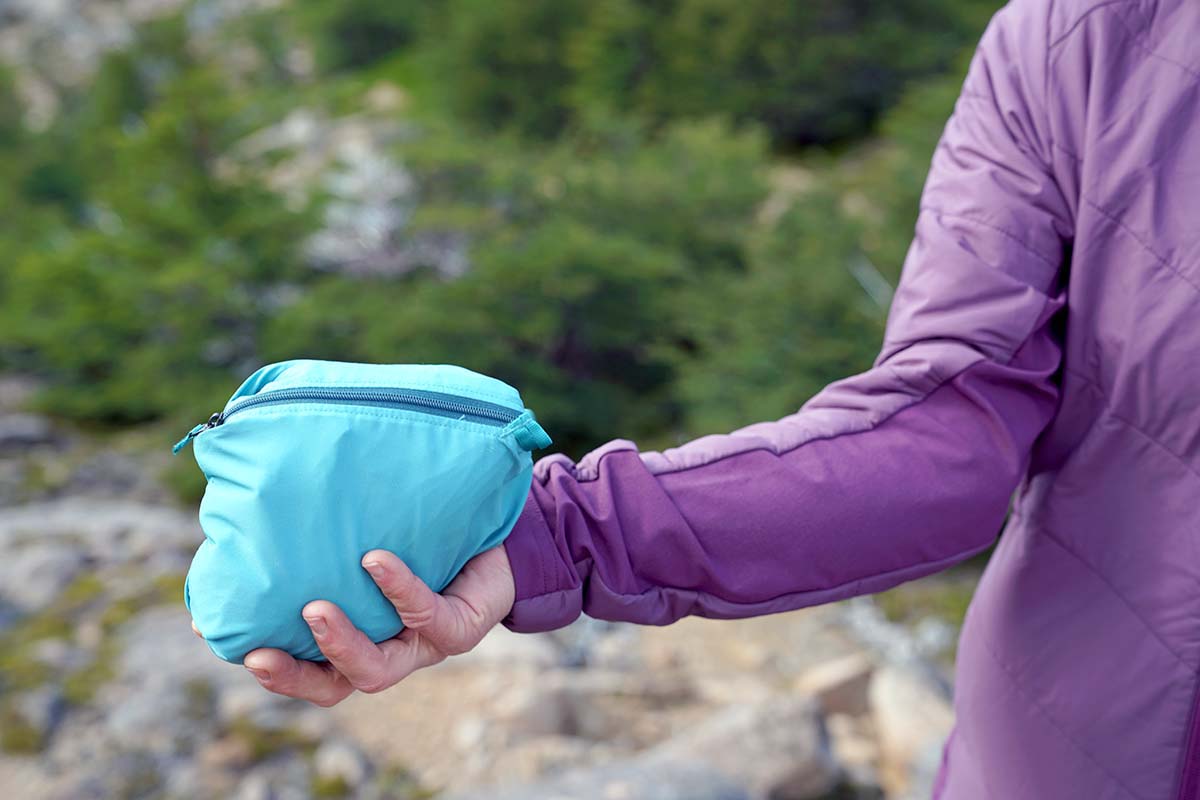
While there aren’t exact parameters stating what is or isn’t a softshell jacket, one defining feature is the stretchiness of the shell fabric. In contrast to a rigid and sometimes confining hardshell or rain jacket, a softshell jacket flexes and moves with you. This stretchiness is particularly helpful for demanding activities like climbing or fast-paced aerobic activities such as hiking or cross-country skiing. The extra give in the fabric also means you can be quite comfortable even with a trim and athletic fit, which makes them all the better for the activities mentioned above.
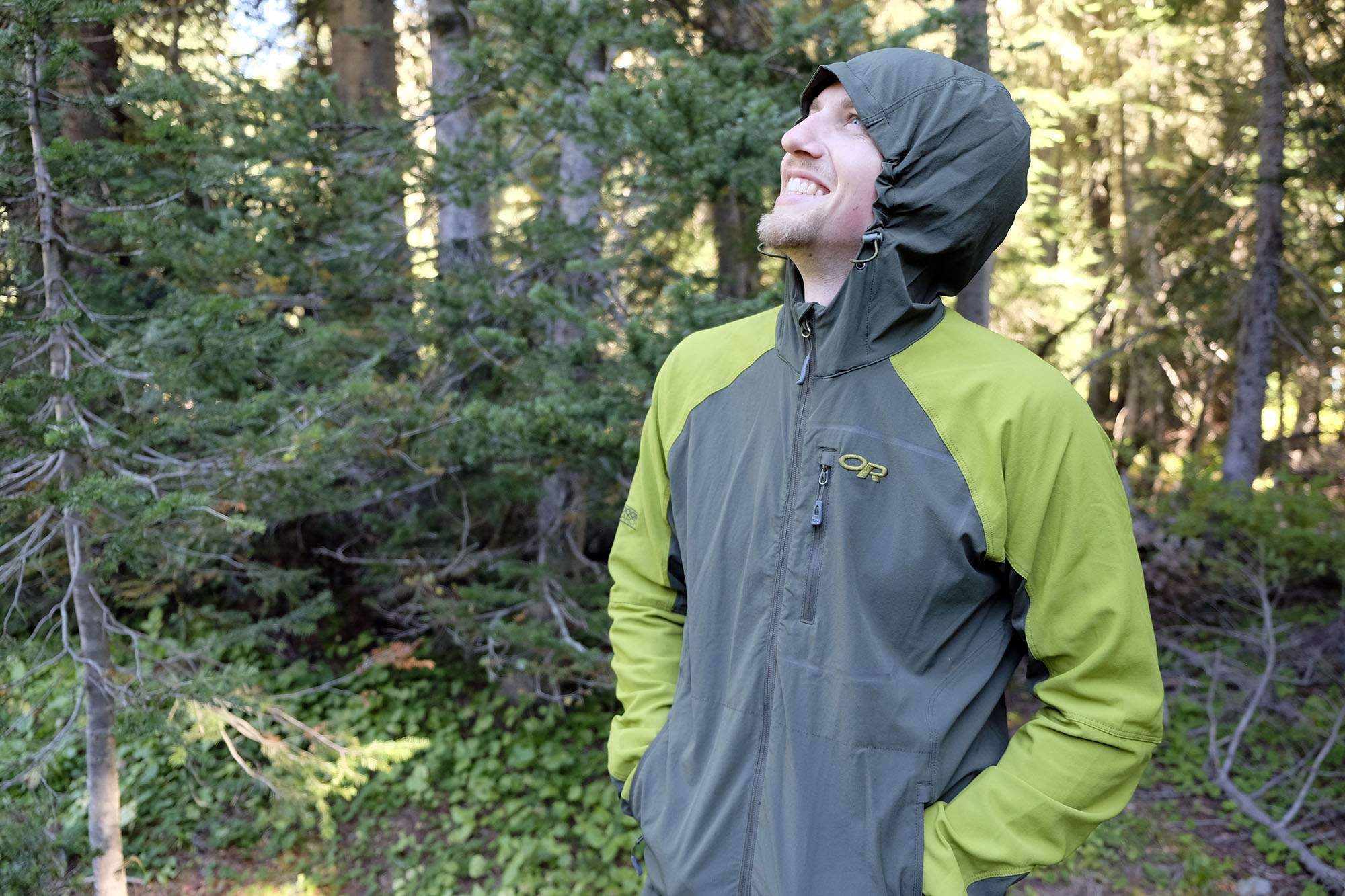
The fit of a softshell will most often correlate with its category, with casual jackets having a more generous, relaxed cut than tailored performance pieces. The fact that these jackets have extra stretch means that in most circumstances, it’s still easy to slip a puffy underneath. If you’ll be taking the jackets into high elevations or need the added warmth of a winter-weight insulated jacket, you may need a more generous fit (or size up). Our ideal softshell has an athletic cut to fully enjoy the stretchy and very mobile characteristics of this jacket type.
Comfort is another area of strength for softshells, particularly the next-to-skin feel. The soft-touch fleece liners on many of these jackets make them quite comfortable, even when worn over a short-sleeved shirt. And as with fit, their stretchy nature is a boon for daylong enjoyment. The drawback to this is added weight. A minimalist softshell like Black Diamond's sub-8-ounce Alpine Start Hoody saves weight and packs down small but has a crinkly next-to-skin feel, which may be a turnoff for some. Conversely, a beefier jacket like Helly Hansen's Odin Pro Shield offers greater warmth and comfort with its cozy fleece liner but runs on the heavy side (1 lb. 5.2 oz.) and may be too bulky for ultralight adventurers.
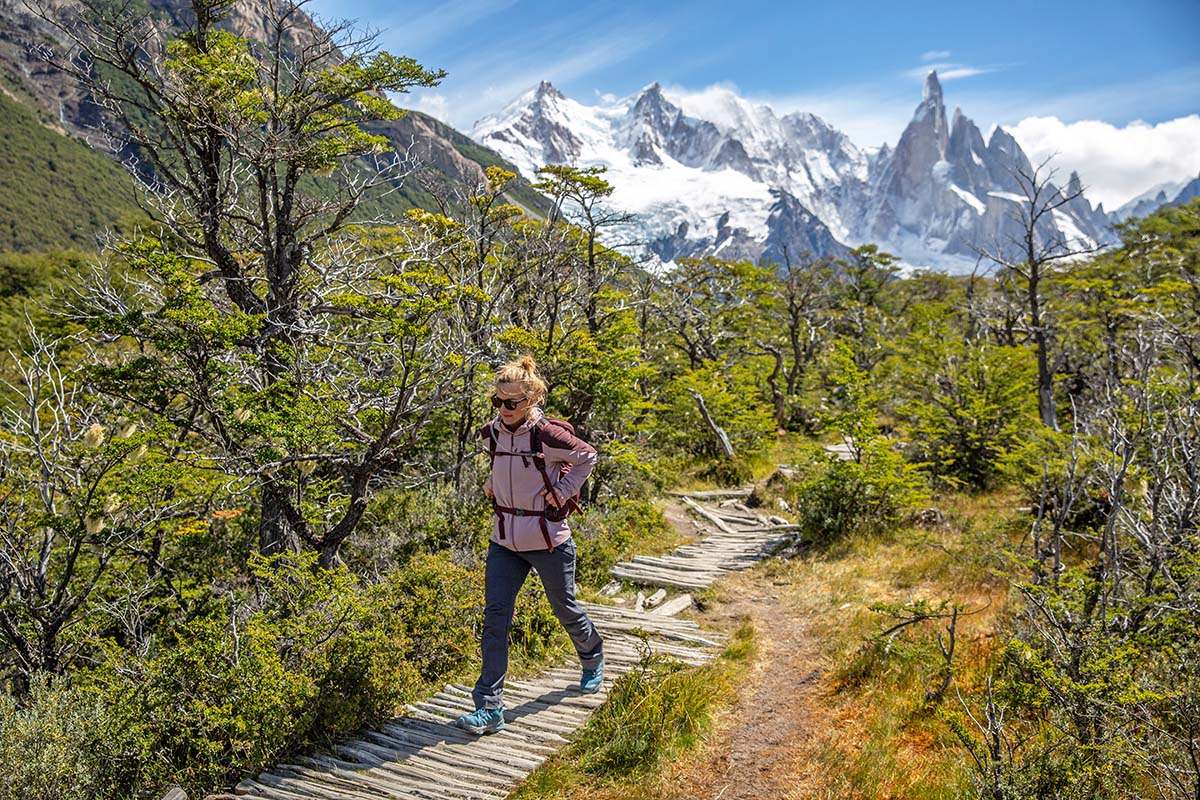
A good number of softshells are sold in both hooded and non-hooded styles, including the top-rated Arc’teryx Gamma Lightweight. In general, those who choose a performance softshell will opt for the hooded version for better protection from the elements. While the hood isn’t waterproof, it can provide sustained relief from light rain and wind, keep snow from entering your jacket at the neck, and offer additional warmth. But if you’ll be using your softshell as a midlayer or around town, the standard non-hooded version may be your better option.
Finally, if you’re using a helmet, make sure the softshell has a helmet-compatible hood. Because helmet sizes can differ (ski helmets are generally quite a bit bulkier than climbing helmets), you'll want to pay attention to what sort of helmet the hood is sized for. To help, we've provided a detailed breakdown in our comparison table above.
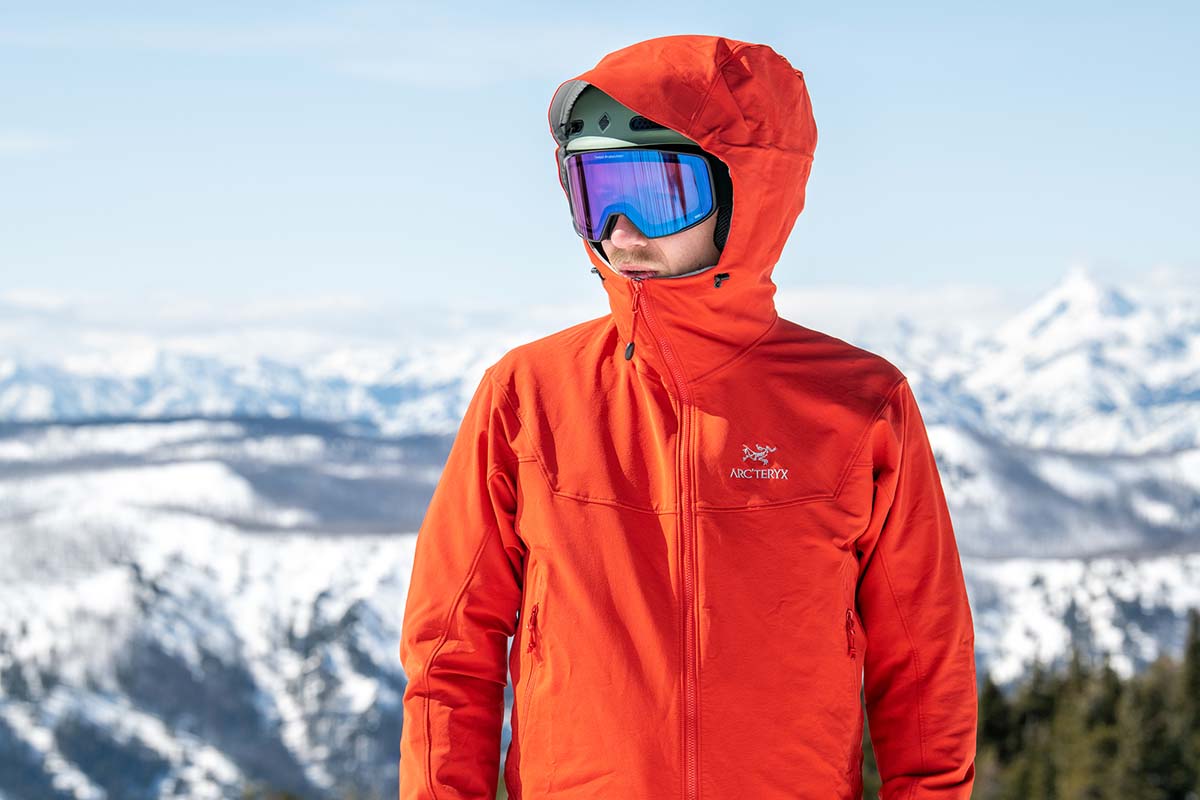
Pockets are a great place to start if you’re wondering about a jacket’s true intentions. You’ll find a range of storage options among softshells, from the single chest pocket on a minimalist jacket like the Black Diamond Alpine Start to the five-pocket design of some other models. In a casually minded jacket, we look for two standard-height handwarmer pockets (just above the hip) and one to two chest pockets for storing valuable items. Performance-oriented softshells are more of a mixed bag depending on their end use, and you’ll have to decide whether you want to prioritize weight savings (less pockets) or convenience and organization (more pockets). When it comes to softshells in our performance category, look for torso-height handwarmer pockets (for easy access when wearing a harness or hipbelt), interior dump pockets for storing goggles or skins, or streamlined pockets that double as an integrated stuff sack for the jacket.
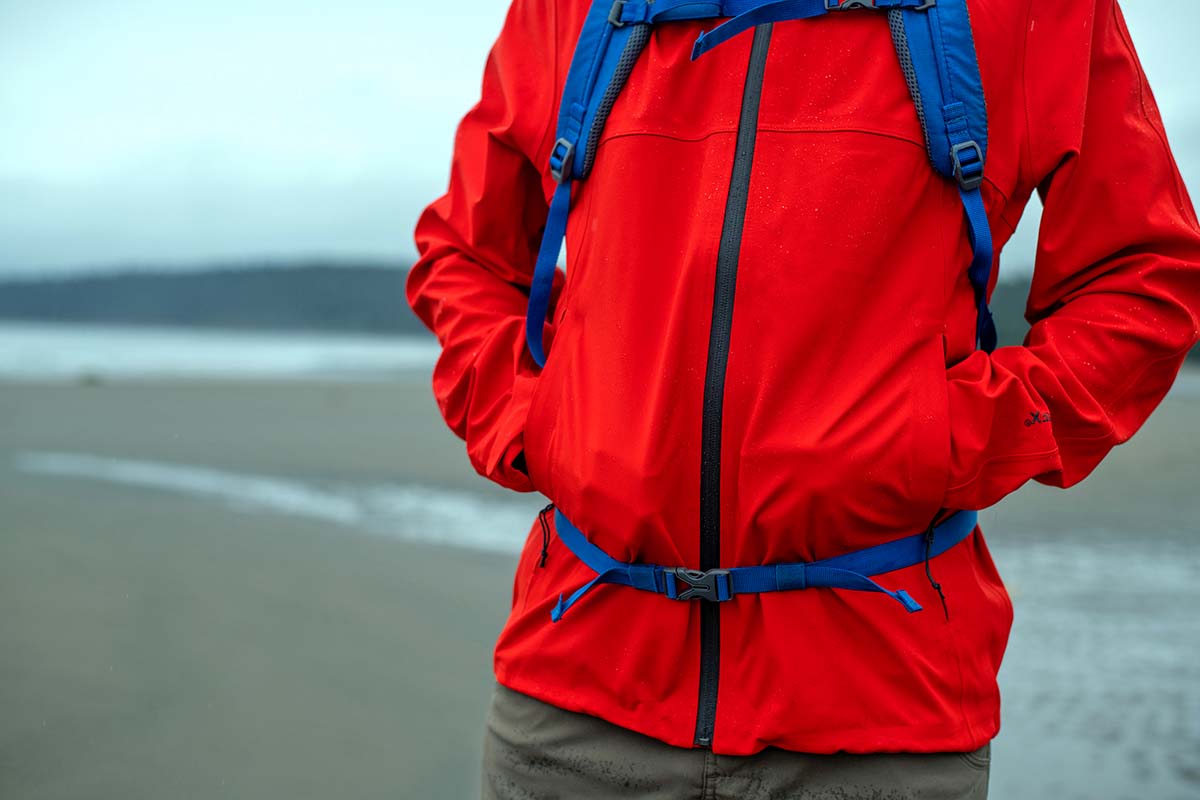
In recent years, one of the primary ways we've seen manufacturers innovating is through the use of more sustainable materials. In terms of softshells, this means recycled fabrics, more responsible production practices (including the elimination of harmful chemicals from water repellent finishes as seen in PFAS-free DWR coatings), and an emphasis on the ethical treatment of workers. Many companies also utilize the bluesign system for sourcing materials responsibly. Patagonia is a clear leader in the sustainability movement, but brands like Outdoor Research, REI, Arc’teryx, and Black Diamond have also made a sizable effort to reduce their footprint. And while we encourage you to shop sustainably, we’re also big advocates of lowering consumption by reusing old gear. Many brands offer repair programs and used marketplaces for their offerings (such as Patagonia's Worn Wear and REI's Re/Supply), and local gear consignment stores can be treasure troves for like-new items.
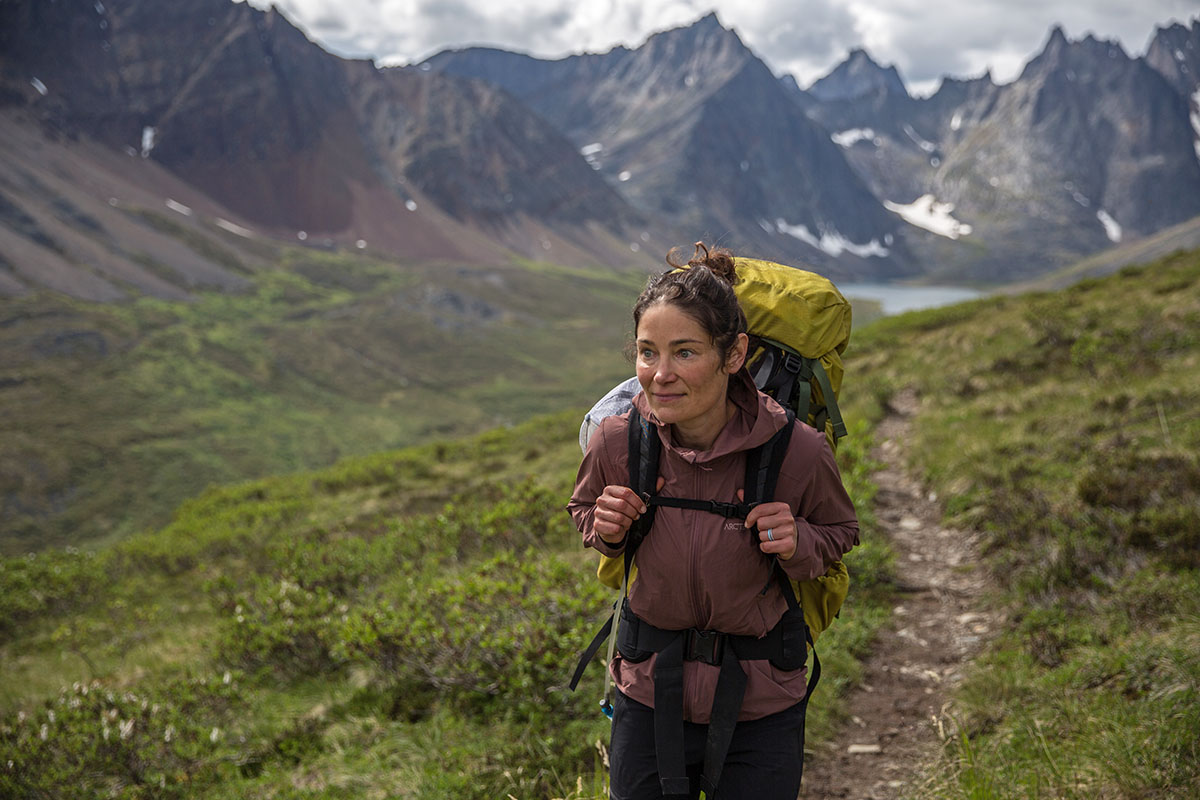
Outdoor gear is becoming more and more streamlined by the year, and windbreaker jackets sit at the helm of this movement. Also referred to as windshirts, these jackets are exceptionally lightweight—generally between 2 and 7 ounces—and commonly stuff down to about the size of a coffee mug. And they’re small but mighty—made with breathable and water/wind-resistant nylon, they provide valuable warmth and weather protection. Climbers will often bring a a windbreaker jacket in lieu of an insulating baselayer, as it easily attaches to their harness with a carabiner. They’re are also popular with weight-conscious bikers, runners, backcountry skiers, and thru-hikers.

We certainly wouldn’t classify all windbreaker jackets as softshells. Some, like the Patagonia Houdini, do not stretch and are significantly lacking in breathability. That said, we see a trend towards wind layers becoming more and more stretchy and breathable—in other words, taking on the properties of a softshell. This results in a best-of-both-worlds hybrid layer that’s light and packable, breathable and pliable, and still impressively weather-resistant. We’ve included a few windbreakers in this year’s article—including the Black Diamond Alpine Start and Rab Borealis—but expect to see more and more of these hybrids pop up on our list as we continue testing them.
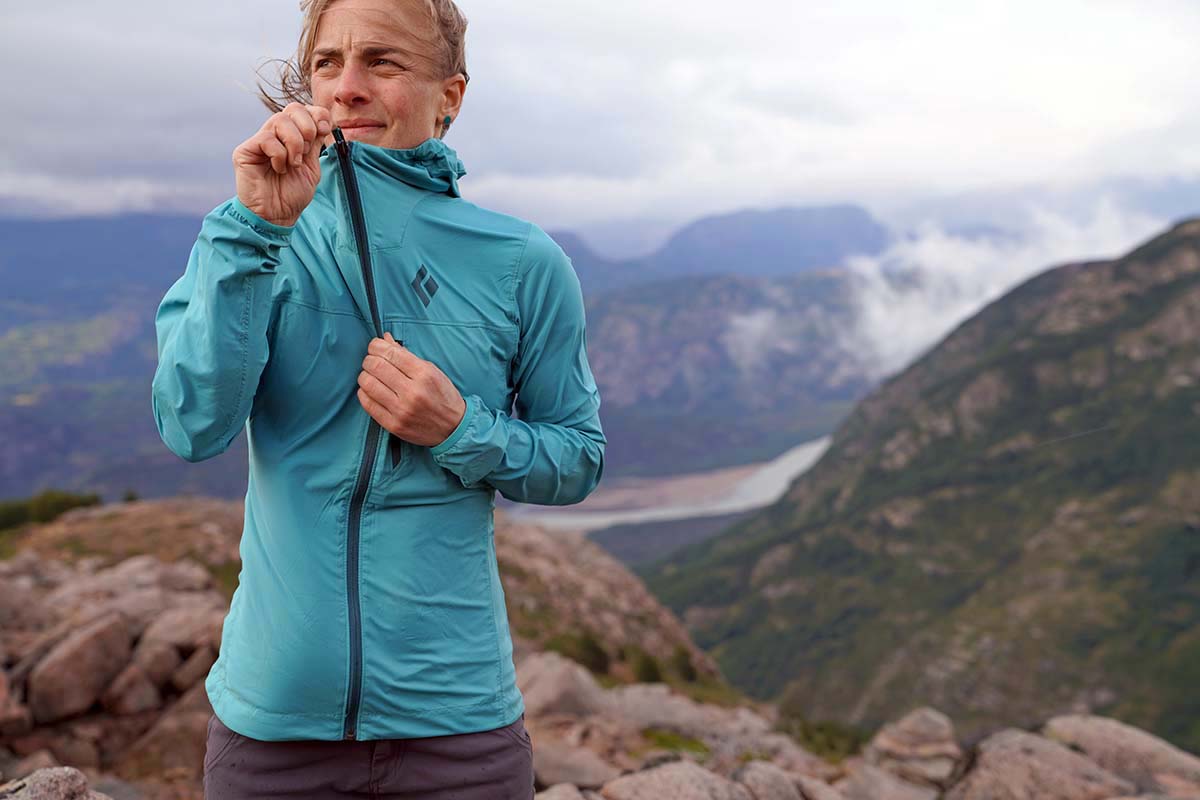
Softshells are a relatively young product, and early versions were simply fleece jackets with a tougher, more weather resistant face fabric. They’ve quickly grown in popularity and technology and are now a realistic competitor to a hardshell for a number of alpine sports. Where softshells excel is breathability, range of motion, and comfort. On the other hand, hardshells win out in harsh conditions with waterproof and windproof exteriors and lighter weights. There is some crossover between categories, including jackets like the Rab Kinetic 2.0, which includes mechanical stretch in its fully waterproof design. That being said, it’s not quite as stretchy as a softshell and its fully waterproof design does result in slightly compromised breathability.
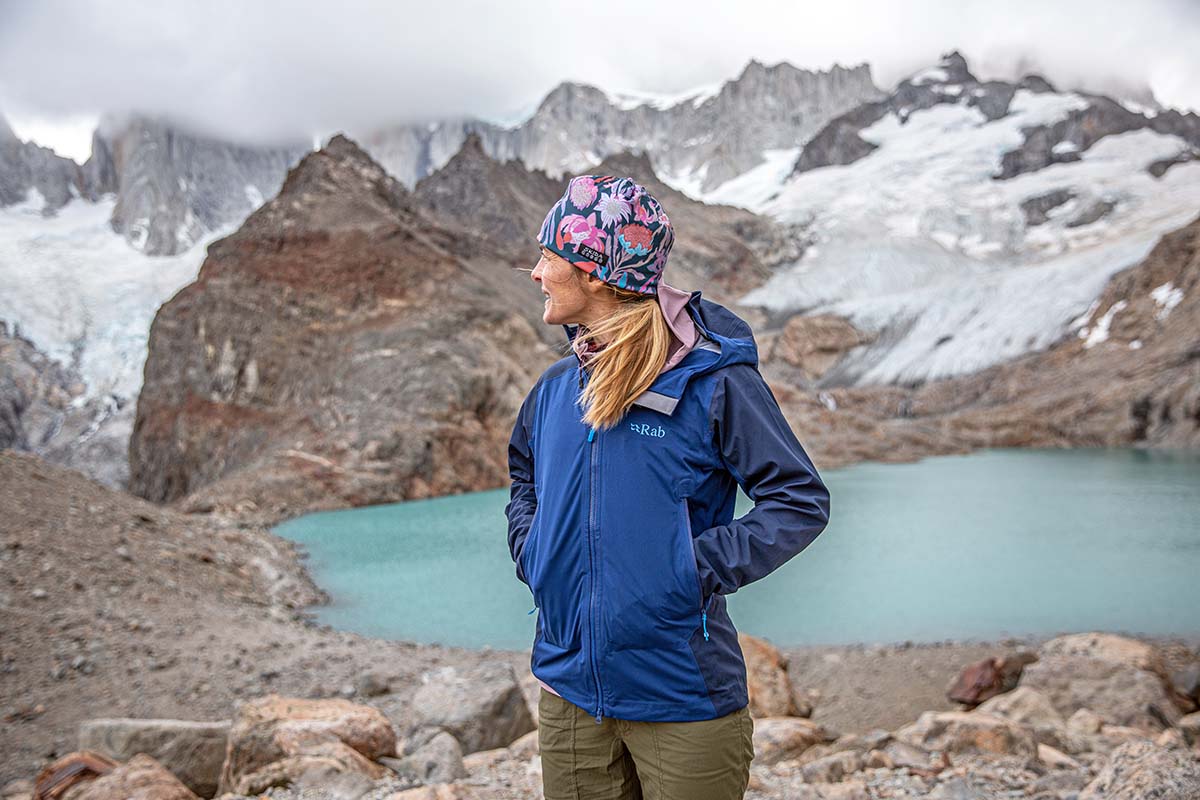
Both jacket types are completely viable options for activities like mountaineering, climbing, hiking, and skiing, among others. Your priorities should push you in one direction or the other and, realistically, those that spend a lot of time in the outdoors have at least one of each type. From our experience, the more familiar we’ve become with our gear and the conditions we’ll be heading out into, the more willing we are to reach for our softshell. It may not have that extra security blanket that comes with all the “proofing” of a hardshell, but its breathable and very comfortable nature make it a lot more enjoyable to wear the entire day. For a deeper dive into the topic, see our article on Hardshell vs. Softshell Jackets.
Back to Our Top Softshell Jacket Picks Back to Our Softshell Jacket Comparison Table